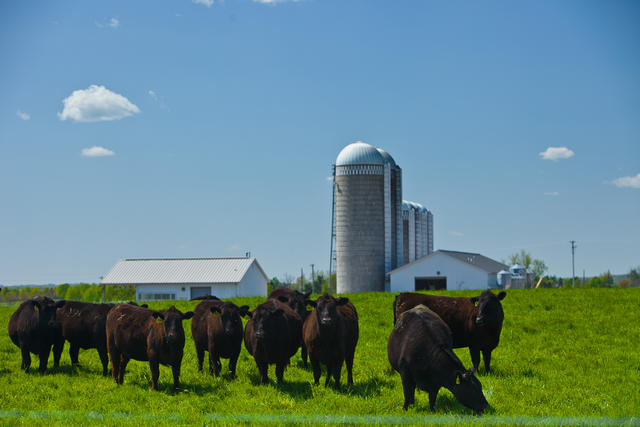Cattle producers need to watch out for grass tetany
Cattle producers need to watch out for grass tetany


With spring finally arriving pastures are beginning to green up. For most cattle producers, that is a welcome event that leads to less reliance on feeding hay. But University of Kentucky College of Agriculture, Food and Environment specialists said this is also the time for producers to watch out for and prevent a condition called grass tetany in their cattle.
“Grass tetany is also known as grass staggers, lactation tetany or hypomagnesemia,” said Michelle Arnold, UK extension veterinarian. “Grass tetany is a metabolic disorder caused by reduced magnesium levels in the animals’ blood.”
In general, the condition affects older, early lactation cows, but it can also affect dry cows, young cows and, in rare cases, growing calves.
“You should watch out for cattle that show symptoms such as nervousness, lack of coordination, muscle spasms and staggering. This may lead to convulsions, coma and death,” Arnold explained. “If you suspect cattle are showing signs of grass tetany, you need to contact a veterinarian because early treatment can save animals.”
While grass tetany can occur in fall and winter, it most frequently occurs in spring with young, cool-season grasses and small grains that are utilized as forage.
“This year we have the same chance of cattle having problems with grass tetany as in previous years,” said Donna Amaral-Phillips, UK dairy specialist. “With the later start in grass growth this year, grass tetany may occur later in the spring, but a lot of it comes down to the weather as we proceed.”
While there may not be a higher incidence of the problem this year, managing it may be more economically significant than past years.
“The high-value of beef cattle this year makes managing the risk of grass tetany even more important from an economics point of view,” said Jeff Lehmkuhler, UK beef specialist. “Cull cows are currently in excess of $100 per hundredweight and feeders are around $1,000 to $1,200 per head. So, minimizing the risk is relatively inexpensive and definitely worth the cost.”
Feeding magnesium or “high-mag” mineral supplements is the best way to reduce the occurrence of grass tetany. Most feed stores carry the supplements. Ideally producers need to start feeding those supplements 30 days before spring grass growth. A free-choice high mag mineral, with a target intake of 4 ounces, should contain 12 to 15 percent magnesium from magnesium oxide.
“Obviously prevention is the key; feeding magnesium supplements before cattle begin to graze early spring grass will help to avoid it altogether,” Arnold said. “Response to treatment after symptoms begin is not always good and largely depends on the time between symptom onset and treatment beginning.”
“Reducing the risk of grass tetany in grazing cattle involves using a balanced mineral supplement offered to lactating cattle free-choice. Producers must ensure the cattle consume the mineral product at or near the suggested intake level on the feed tag,” Lehmkuhler recommended. “Producers should not use straight white salt during this time of the year, as it reduces the intake of the complete mineral product and magnesium.”
He indicated the key to using free-choice products was to find a product that was palatable and to manage the mineral feeders to ensure cattle have access 100 percent of the time.
“It is a fact that magnesium absorption is dependent upon having adequate sodium in the forestomach, but this does not preclude the necessity to provide elevated magnesium in the supplement,” he said.
Other management strategies, in addition to supplementing magnesium, include soil testing and applying fertilizer based on soil test results and using no more potassium than recommended. Lehmkuhler said research in Missouri has shown that phosphorus fertilization has increased plant magnesium levels in tall fescue.
Producers can also graze cattle on legumes, which are high in magnesium, although their growth is often limited in early spring.
Arnold urged producers to contact their county extension agents and local veterinarians for more information.
Extension

